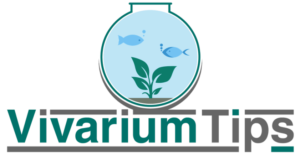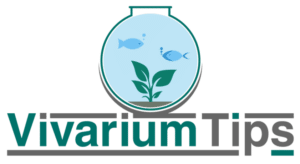Are you feeling a little worried about the decaying stuff inside of your tank? Look no further – you can use springtails to assist your problem!
You probably didn’t know this yet, but you can catch springtails. But how –
One question remains – your mind is wondering how to catch springtails in the wild.
How do you trap and collect them?
Fortunately, you’ve come to the right place. This springtail catching guide will cover everything you need:
- An explanation defining springtails.
- What they are attracted to.
- Places you can find them in the wild.
- The best ways to catch springtails.
- Their reproduction rate.
Are you ready to learn to catch your very own springtails?
[amazon bestseller=”live springtails” items=”2″ ]
What are springtails?

At this point, you’ve probably heard about springtails and know what they can do. What are springtails exactly?
The term ‘springtails’ comes from collembolans and they are one of the biggest of the three ancestors of the present-day hexapods. These guys are also known as “snow fleas.”
Did you know? 💡 Springtails are not considered insects even though they appear like one.
These tiny hexapods use the protein inside of their body to withstand harsh temperatures. They can hop from place to place, which is quite similar to a flea.
What are springtails attracted to?

Now that you have a better understanding of springtails, you must be wondering what they are attracted to?
Springtails are attracted to:
- Excessive Moisture – The reason why springtails are attracted to moisture is that these creatures consume fungi and mold and they usually appear around wet spots.
- Wet Places – These guys generally lose water above their body, so they usually migrate to a wetter place if the environment is dry.
- Soil Beneath Decaying Wood – Springtails like to live underneath decaying wood.
Did you know? 💡 Springtails are most active when it’s the afternoon or a few hours before sunset.
With the list above, this explains why springtails are attracted to these because they consume bacteria, mold, decaying plants, and even fungi!
Where can you find springtails?

You now know what springtails are and what they’re attracted to. You want to catch these guys because you know it’ll do well for your tank – but where do you find them?
To help ease your journey, you can find springtails in the outdoors usually in soaked fields or forests.
They can actually be found almost everywhere on Earth (even Antarctica!), but let’s get a little more specific.
The best way to find springtails is if you find any location that is damp and has moisture.
Here are examples:
- Under decaying branch
- Leaf litter
- Soil
- Under rocks and stones
Did you know? 💡 Springtails can hop up to 8 inches in the air!
Now that you have an idea, let’s help you catch these springtails with 6 easy steps.
How do you catch springtails?

Now that you’re here, let’s teach you the ways into catching springtails!
- Step 1. Grab a container (deli-box size, to-go food box, etc.)
- Step 2. Place a wet paper towel inside the container and have it spread out.
- Step 3. Put the store-bought mushroom inside the container on the paper towel.
- Step 4. Take it to the spot where you found your army of springtails.
- Step 5. Cover your container with leaf litter and wait several days.
- Step 6. Jackpot!
The reason for adding a wet paper towel in step 2 is because springtails love moisture. With sliced mushroom added, leaf litter surrounding it, and it’s the perfect springtail bait!
You will attract springtails like no tomorrow with this method. You just have to find your location, add your bait, and wait a few days. Done?
Now that you caught your springtails, there are certain things you should know before adding it with your ecosystem. Especially this:
Springtails can reproduce all year.
The Pros of Having Springtails With Your Ecosystem

You’re wondering why I included a positive section. Does that mean there’s a negative to owning springtails? We’ll get there in a moment.
- Pro 1. Springtails consume dead plants. They also feed on fungi that are dangerous to plants, which is a tremendous help to the ecosystem.
- Pro 2. These creatures can spread the right kind of fungi used for gardening and agriculture.
- Pro 3. When springtails encounter dead flies or worm, they consume them. This serves as another food source for these guys!
- Pro 4. Another one of their favorite meal is consuming organisms with diseases.
- Pro 5. The reason why your garden or any environment is balance is because of the existence of springtails.
- Pro 6. They’re basically doing all the cleaning for you! They consume all the terrible stuff.
As you can see, springtails definitely play a huge part when it comes to nature. This makes question yourself…
What’s the worst that could happen when owning springtails?
The Cons of Having Springtails With Your Ecosystem

There aren’t as many negative things about springtails as there are positives. This is the cons when you have springtails in your ecosystem.
- Con 1. Springtails are known as annoying pests to many people. These critters will chew the roots of plants if given the opportunity.
- Con 2. While they are harmless to people, they can be unpleasant once they enter your home. These guys will reproduce really quickly and can start infesting your carpets and areas inside of your home.
- Con 3. As mentioned in the last line, it’s worth giving springtails another number for this. They reproduce fast!
Even if I listed only three, it’s worth noting that having your house infested outweighs a lot of the numbers for the pros.
Helpful Tip: If you noticed springtails inside of your house, that means that there’s a sign of mold spreading.
With the pros vs. cons here, what do you think about springtails?
From VivariumTips,
Hopefully, you learned a lot about springtails in this article. From my perspective and opinion, I believe that springtails are really important to keep a balance and running ecosystem.
If you have any questions or feedback, don’t hesitate to comment right below this article.
If this article helped you in any shape or form, then consider reading my other informative guides:
- What can I use instead of distilled water for my ecosystem?
- How to make a Jarrarium?
- How often do you water a terrarium?
Not only that, but I created a resource page to help future readers in finding what they need. You will be able to find forums, communities, and such.
The best way to support this blog is if you can share any articles on this website with a friend. 🙂

